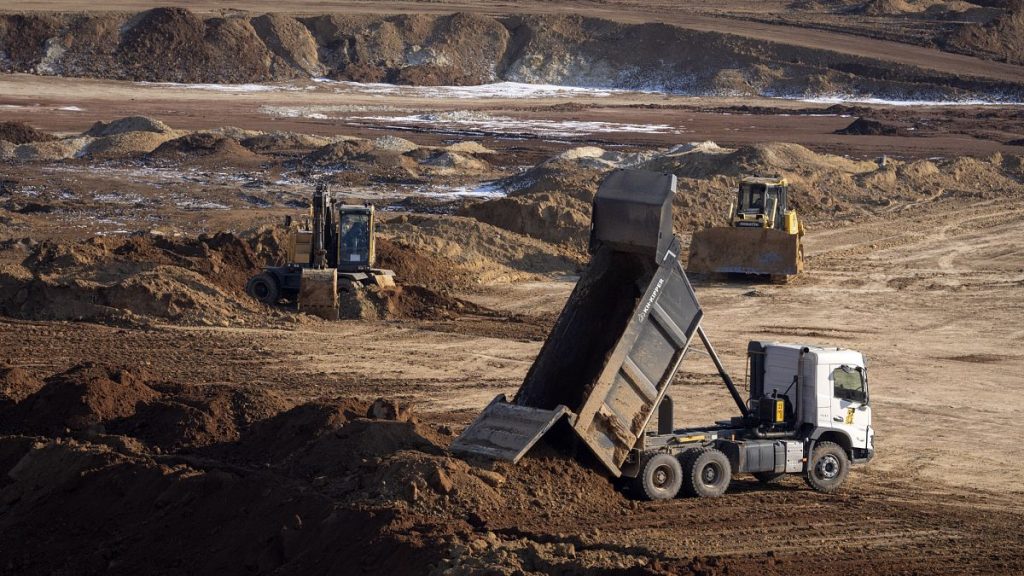Ukraine is advancing toward an agreement that would provide the United States with access to its rare minerals, a strategic move aimed at securing continued American support amidst the ongoing conflict with Russia. Senior officials from Ukraine, including Economy Minister Yulia Svyrydenko, have traveled to Washington to finalize the deal. This initiative is seen as crucial for the stability of Ukraine’s economy and military aid, as both nations seek to enhance their partnership.
| Article Subheadings |
|---|
| 1) Details of the Agreement |
| 2) Strategic Importance of Rare Minerals |
| 3) Negotiation Processes and Challenges |
| 4) The Role of US Military Aid |
| 5) Current Status of the Conflict |
Details of the Agreement
The proposed agreement between Ukraine and the United States is designed to ensure access to a variety of rare minerals essential for technological advancement and military applications. Economy Minister Yulia Svyrydenko has been instrumental in the discussions, emphasizing that the deal would likely create an equal investment partnership fund. Such a fund aims to facilitate development projects in Ukraine while providing the US with strategic resources crucial for its own industrial needs.
Key aspects of the agreement involve financial contributions made in cash rather than resources, and particularly stress that any military aid provided by the US preceding the deal would not count towards the American share in this partnership. The Ukrainian Cabinet is currently expected to endorse the finalized terms before it can be signed in Washington, followed by ratification from the Ukrainian Parliament.
Strategic Importance of Rare Minerals
Ukraine possesses significant deposits of rare minerals deemed critical for both military supplementation and technological innovation. Chief among these are titanium, utilized in aerospace manufacturing, and uranium, employed in nuclear power generation. Other crucial minerals include lithium, graphite, and manganese, all of which play a pivotal role in battery production for electric vehicles.
Access to these resources is particularly alluring for the US, not only to sustain its military capabilities but also to secure its own economic interests against rivals like China. This realization has intensified the urgency of concluding a formal agreement to ensure mutual benefits in a rapidly evolving global market.
Negotiation Processes and Challenges
Despite hopes to finalize the agreement promptly, discussions have faced numerous hurdles. The initial draft of the deal primarily favored American interests, raising concerns within the Ukrainian administration. To address these apprehensions, Ukrainian officials insisted on amendments to create an equitable partnership that would last for ten years.
Tensions were evident during earlier negotiations, particularly after a stressful meeting in the Oval Office between US officials and Ukrainian President Volodymyr Zelenskyy. The urgency to balance interests has made it increasingly challenging to reach consensus, as both sides grapple with complex geopolitical dynamics amid a protracted conflict.
The Role of US Military Aid
US military aid has been a crucial factor in Ukraine’s defense strategy against Russian advances. The proposed agreement ties this aid directly to Ukraine’s access to rare minerals, making it a reciprocal arrangement rather than a one-sided benefit.
“This is truly an equal and good international deal on joint investment in the development and restoration of Ukraine between the governments of the United States and Ukraine,”
stated Denys Shmyhal, the Ukrainian Prime Minister, highlighting the importance of shared growth alongside military support.
This relation mirrors a growing trend of countries leveraging their natural resources as a bargaining chip to fortify defensive strategies, a method designed to further secure military assistance in turbulent times.
Current Status of the Conflict
As negotiations for the mineral deal progress, the backdrop of the ongoing conflict remains crucial. Russian President Vladimir Putin has voiced calls for a ceasefire but insists clarity is needed before any agreement can be established. The Kremlin has framed the negotiation processes as complicated and demanding careful consideration, often drawing out discussions in hopes of consolidating strategic advantages.
International observers, including Western European leaders, have accused the Kremlin of tactical delays while expanding territorial control over Ukraine. The war, which began with a full-scale invasion on February 24, 2022, has led to significant loss of life and territorial disputes that complicate any prospects for peace.
| No. | Key Points |
|---|---|
| 1 | Ukraine seeks an agreement for US access to its rare minerals to ensure continued support. |
| 2 | Key minerals include titanium, uranium, lithium, and manganese. |
| 3 | Negotiations face complexities, with earlier drafts favoring US interests. |
| 4 | Military aid ties into the agreement, benefiting both parties strategically. |
| 5 | The war in Ukraine complicates negotiations, with international observers concerned about Russia’s advances. |
Summary
The prospective agreement for the United States to access Ukraine’s rare minerals signifies a strategic collaboration aimed at sustaining military support and bolstering mutual economic interests amid ongoing tensions with Russia. While Ukraine emphasizes the importance of equity in negotiations, the backdrop of a protracted conflict adds layers of complexity to any potential arrangement. This evolving dynamic is pivotal not only for the involved nations but also for broader geopolitical stability.
Frequently Asked Questions
Question: What minerals is Ukraine offering access to in its agreement with the US?
Ukraine is proposing access to minerals such as titanium, uranium, lithium, and manganese, which are essential for military and technological applications.
Question: How does military aid tie into the agreement between Ukraine and the US?
The agreement stipulates that US military aid will be considered a financial contribution to a joint fund, vital for both supporting Ukraine’s defense and fostering mutual economic interests.
Question: What challenges have beset negotiations for the mineral access agreement?
Negotiations have faced complexities including earlier drafts that favored US interests, leading to Ukrainian demands for equitable terms and the added strain of the ongoing conflict with Russia.


